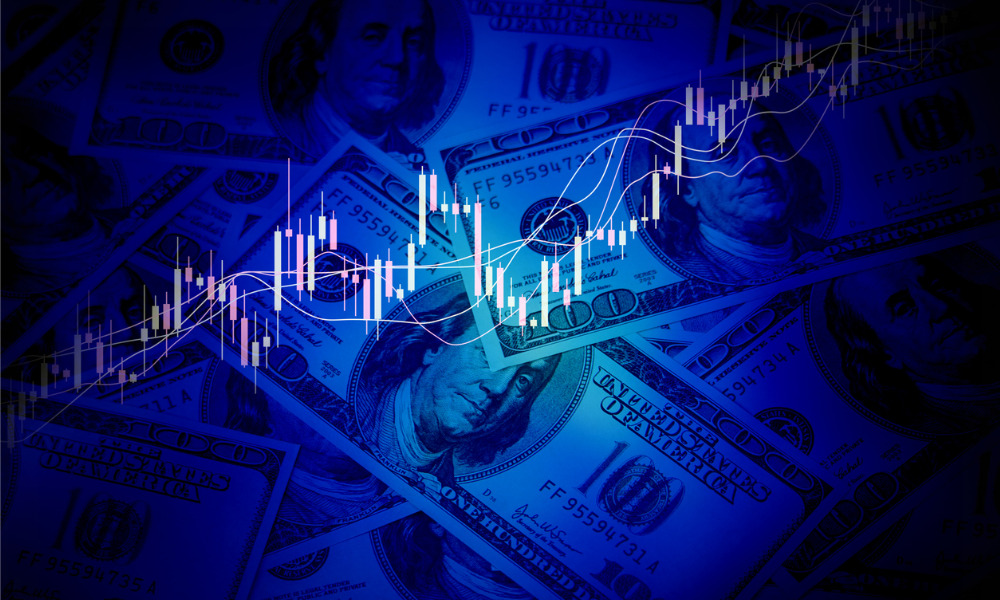

US stocks tallied a second week of gains, with the S&P 500 Index powering through its longest winning streak in more than 20 years and wiping out all losses from April’s tariff turbulence as strong jobs data and progress on international trade talks unleashed a wave of buying.
The S&P 500 rose 1.5%, topping levels it reached on April 2, just before US President Donald Trump triggered a market rout by unveiling sweeping tariffs against major trading partners. The Nasdaq 100 rose 1.6% — bringing its rebound from April lows to 18%, on the cusp of a bull market — while the Dow Jones Industrial Average added 1.4%.
It was a day for superlatives. Friday’s gain in the S&P 500 was the biggest following a jobs-report release in two years, and its 10% nine-day rise marks the longest consecutive climb since 2004. Of the 31 prior cases when the gauge had such a sustained advance, none had a rally this big. The index is also up some 14% from the April 8 bottom that pushed it to the brink of a bear market.
Even as stocks climbed, US bonds tumbled as traders scaled back bets on Federal Reserve interest-rate cuts, while the dollar weakened.
“Markets have shrugged off their self-inflicted tariff wounds as investors trade chaos for clarity, pricing in the idea that deals, even with pain, beats policy uncertainty even without specifics,” said Dave Mazza, chief executive officer at Roundhill Financial.
US gauges got a further jolt at midday after the Wall Street Journal reported that China is weighing options to address the Trump administration’s complaints over its role in the fentanyl trade.
The latest US economic data showed buoyant hiring in April, providing evidence of resilience in an economy increasingly beset by trade pressures.
The economy added 177,000 jobs last month, higher than the 138,000 gain expected by economists and a sign the labor market remains healthy. The jobless rate held at 4.2%. The strong employment print may keep the Fed on hold longer as it weighs the impact of tariffs on growth and inflation.
“On one hand, resilient labor market makes the case for a cut harder, but it also says that job losses aren’t coming as quickly as feared and gives clarity that worst-case fears can be pushed out,” Mazza said.
Elsewhere, all of the Magnificent Seven stocks were up except for Apple Inc., which fell 3.74% as sales from China declined more than anticipated in the latest quarter, overshadowing otherwise solid results for the iPhone maker. The stock received downgrades from Jefferies and Rosenblatt Securities.
Shares of auto-parts makers, consumer companies and other firms linked to global commerce and the health of the economy are rallied on Friday after China said it was assessing the possibility of trade talks with the US.
Among other single-stock movers, Dexcom Inc. shares gained 16.17% to become the best performing stock in the S&P 500 Friday, after the medical-device maker posted better-than-expected revenue for the first quarter. Take-Two Interactive Software Inc. pushed back the release of Grand Theft Auto VI to next year, giving the team more time to finish what’s expected to be one of the most lucrative video games ever. The shares tumbled 6.66%.
In the derivatives market, the premium for near-term options protection has disappeared. For the first time since late March, the spot Cboe Volatility Index — which gauges expected 30-day volatility of the S&P 500 — is below the first month-futures contract, a signal that the the market stress is calming.
A key valuation metric touted by legendary investor Warren Buffett is signaling that equities are relatively cheap, bolstering the case that the sizzling rebound in US stocks has room to run. The “Buffett Indicator” measures the ratio of the total value of the US stock market via the Wilshire 5000 Index divided by the dollar value of US gross domestic product. It stands at its lowest level since early September — even after a bounce that has sent stocks screaming higher in recent weeks.
Veteran Tom DeMark isn’t so sure. The technical strategist, who has advised billionaire investors including Paul Tudor Jones, Leon Cooperman and Steve Cohen, said a near-term top in the market may happen within days, triggered by two new closing highs for the S&P 500, which would lead to sell signals and put pressure the index to resume its decline.
To HSBC strategists, investors will likely continue to rotate equity investments from the US to Europe given the ongoing uncertainty around trade.
“Investors breathing a sigh of relief today may find themselves gasping for air in the coming weeks as they realize that April was just the prologue,” said Max Gokhman, deputy chief investment officer at Franklin Templeton Investment Solutions.

While industry statistics pointing to a succession crisis can cause alarm, advisor-owners should be free to consider a middle path between staying solo and catching the surging wave of M&A.

New joint research by T. Rowe Price, MIT, and Stanford University finds more diverse asset allocations among older participants.

With its asset pipeline bursting past $13 billion, Farther is looking to build more momentum with three new managing directors.

A Department of Labor proposal to scrap a regulatory provision under ERISA could create uncertainty for fiduciaries, the trade association argues.

"We continue to feel confident about our ability to capture 90%," LPL CEO Rich Steinmeier told analysts during the firm's 2nd quarter earnings call.
Orion's Tom Wilson on delivering coordinated, high-touch service in a world where returns alone no longer set you apart.
Barely a decade old, registered index-linked annuities have quickly surged in popularity, thanks to their unique blend of protection and growth potential—an appealing option for investors looking to chart a steadier course through today's choppy market waters, says Myles Lambert, Brighthouse Financial.
